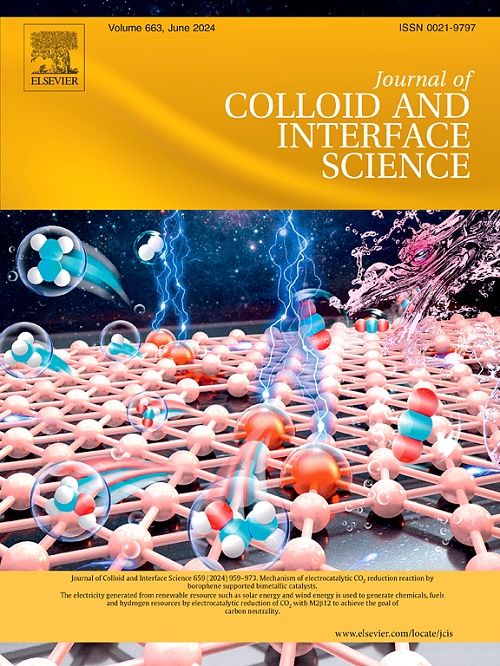具有开放式结构的多杂原子掺杂碳纳米笼,可实现卓越的电磁波吸收能力
IF 9.4
1区 化学
Q1 CHEMISTRY, PHYSICAL
引用次数: 0
摘要
本文章由计算机程序翻译,如有差异,请以英文原文为准。

Multiple heteroatom doped carbon nanocages with an open structure enabling superior electromagnetic wave absorption
In comparison with pure carbon materials, the introduction of heteroatoms and the construction of hollow nanostructures can significantly enhance electromagnetic wave absorption properties. Herein, a multiple heteroatom-doped open nanocages with an amorphous structure was successfully designed and prepared. The introduction of heteroatoms, including Zn, Co, and N, results in charge redistribution and the formation of localized polarization centers within the carbon matrix, consequently enhancing dielectric loss. Meanwhile, the synergistic interplay between heteroatoms and defects in the carbon layer further intensifies space charge accumulation and local electric field formation, leading to enhanced dielectric loss. Furthermore, the open-structured nanocage dramatically improves electromagnetic wave penetration depth and energy dissipation efficiency by lowering material density, promoting impedance matching, and providing multiple scattering pathways. Experimental findings indicate that optimized sample achieves a minimum reflection loss of −48.59 dB at a thickness of only 1.82 mm, and an effective absorption bandwidth of 5.92 GHz. This approach thus represents a promising structural design strategy for advancing the performance of lightweight carbon-based microwave absorbing materials.
求助全文
通过发布文献求助,成功后即可免费获取论文全文。
去求助
来源期刊
CiteScore
16.10
自引率
7.10%
发文量
2568
审稿时长
2 months
期刊介绍:
The Journal of Colloid and Interface Science publishes original research findings on the fundamental principles of colloid and interface science, as well as innovative applications in various fields. The criteria for publication include impact, quality, novelty, and originality.
Emphasis:
The journal emphasizes fundamental scientific innovation within the following categories:
A.Colloidal Materials and Nanomaterials
B.Soft Colloidal and Self-Assembly Systems
C.Adsorption, Catalysis, and Electrochemistry
D.Interfacial Processes, Capillarity, and Wetting
E.Biomaterials and Nanomedicine
F.Energy Conversion and Storage, and Environmental Technologies

 求助内容:
求助内容: 应助结果提醒方式:
应助结果提醒方式:


